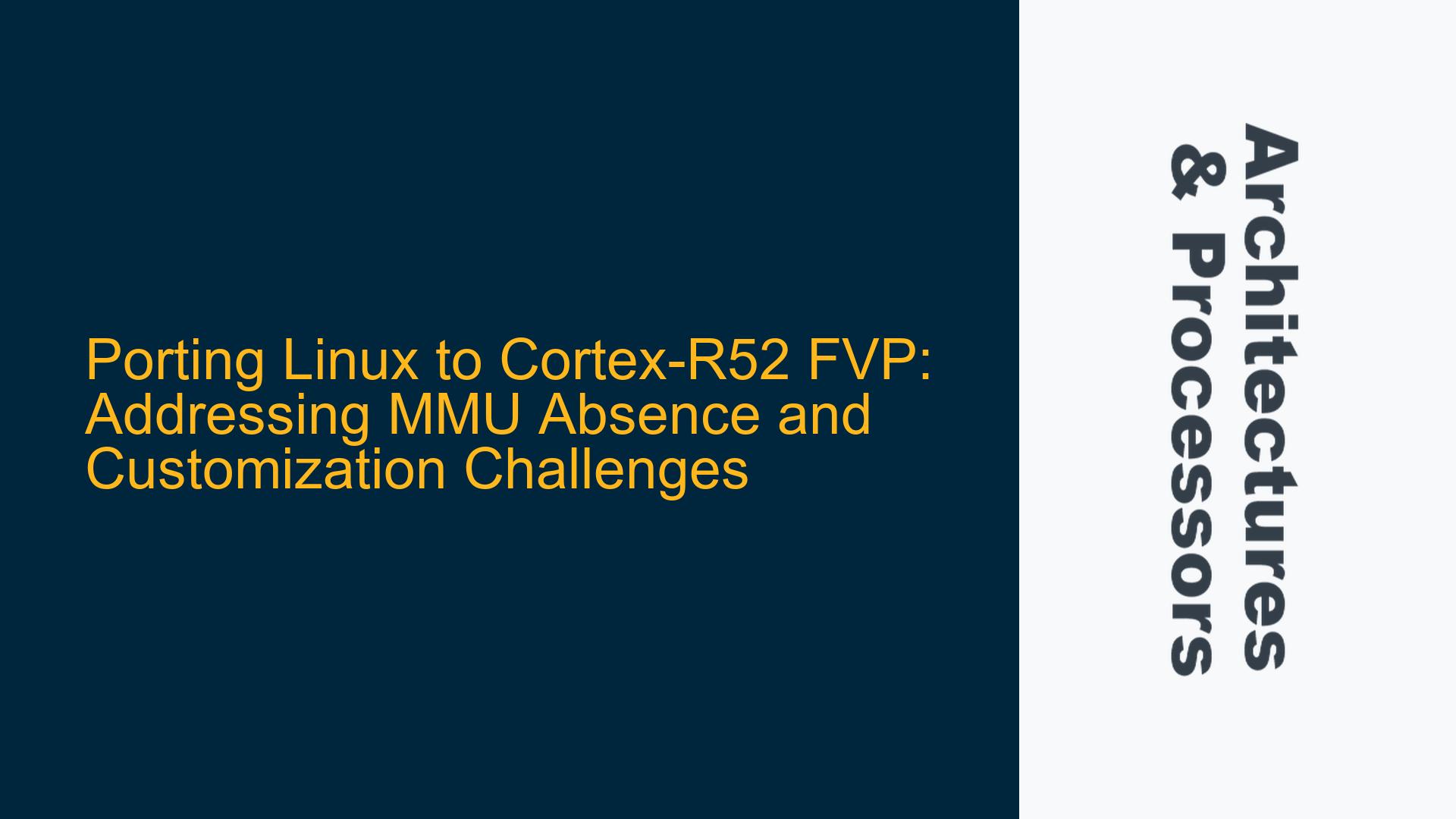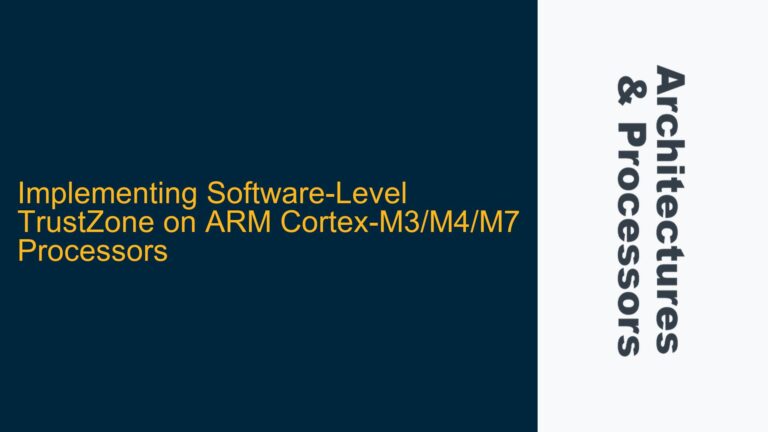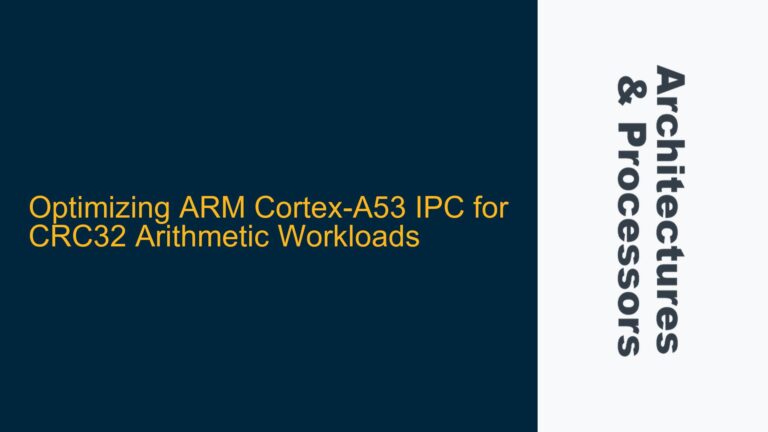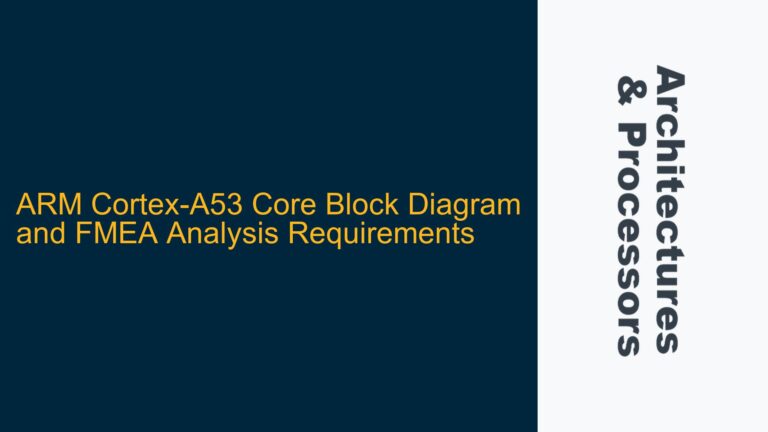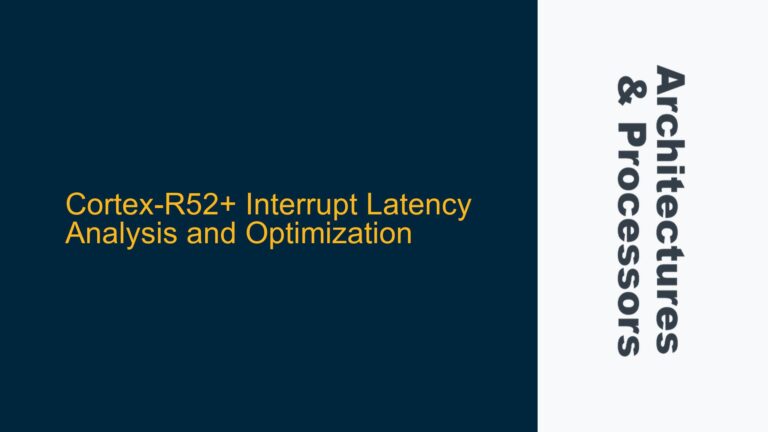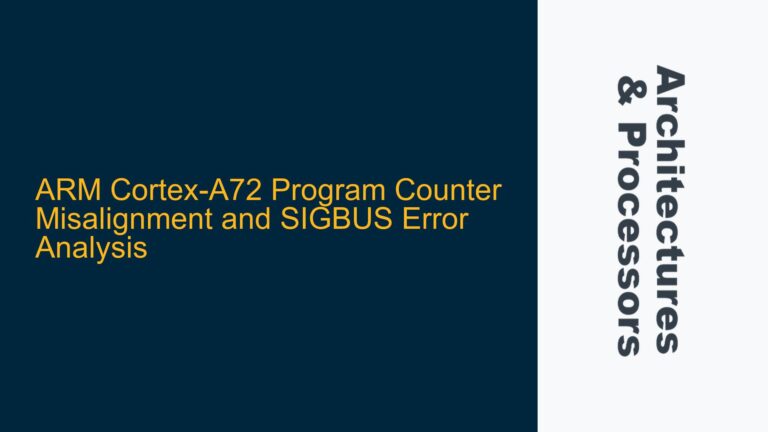ARM Cortex-R52 Linux Porting Challenges Due to Missing MMU
The ARM Cortex-R52 is a high-performance 32-bit processor designed for real-time embedded systems, particularly those requiring functional safety. Unlike its sibling, the Cortex-R82, the Cortex-R52 lacks a Memory Management Unit (MMU), which is a critical component for running standard Linux distributions. The absence of an MMU in the Cortex-R52 presents significant challenges when attempting to port Linux, as the Linux kernel inherently assumes the presence of an MMU for memory management, virtual memory, and process isolation. This architectural mismatch necessitates extensive customization of the Linux kernel to adapt it to the Cortex-R52’s memory model, which relies on a Memory Protection Unit (MPU) instead of an MMU.
The Cortex-R52’s MPU provides limited memory protection capabilities compared to an MMU. While an MMU supports virtual memory, paging, and complex memory mapping, the MPU only offers basic memory region protection. This limitation means that the Linux kernel must be modified to operate within a flat memory model, where physical addresses are used directly, and advanced memory management features like virtual memory and demand paging are unavailable. Additionally, the Cortex-R52’s hypervisor support, which is a key feature for safety-critical systems, further complicates the porting process, as the hypervisor and Linux kernel must coexist without the benefit of MMU-based isolation.
The primary challenge in porting Linux to the Cortex-R52 lies in reworking the kernel’s memory management subsystem to function without an MMU. This involves modifying the kernel’s address translation logic, redefining memory allocation strategies, and ensuring that all kernel and user-space code operates within the constraints of the MPU. Furthermore, the lack of virtual memory support means that applications must be carefully designed to avoid excessive memory fragmentation and to ensure deterministic behavior, which is critical for real-time systems.
Memory Management Unit (MMU) Absence and Hypervisor Integration Complexities
The absence of an MMU in the Cortex-R52 is the root cause of the challenges in porting Linux. The Linux kernel is designed with the assumption that an MMU is present, enabling features such as virtual memory, process isolation, and demand paging. These features are fundamental to the kernel’s operation and are deeply embedded in its architecture. Without an MMU, the kernel must be adapted to use the Cortex-R52’s MPU, which provides only basic memory protection and lacks the flexibility and functionality of an MMU.
The Cortex-R52’s MPU allows for the definition of a limited number of memory regions, each with specific access permissions. However, it does not support virtual memory or address translation, which means that the kernel must operate in a flat memory model. This model requires significant changes to the kernel’s memory management subsystem, including the removal of virtual memory-related code and the implementation of alternative memory allocation strategies. Additionally, the MPU’s limited number of regions imposes constraints on how memory can be partitioned and protected, requiring careful planning and optimization.
Another layer of complexity arises from the Cortex-R52’s hypervisor support. The hypervisor is designed to provide robust separation between different software domains, which is essential for safety-critical systems. However, the lack of an MMU complicates the integration of the hypervisor with the Linux kernel. Without MMU-based isolation, the hypervisor and kernel must rely on the MPU for memory protection, which may not provide the same level of security and flexibility. This necessitates additional modifications to both the hypervisor and the kernel to ensure that they can coexist and operate safely within the constraints of the MPU.
Customizing Linux Kernel for Cortex-R52 MPU and Real-Time Requirements
Porting Linux to the Cortex-R52 requires a comprehensive approach to address the absence of an MMU and the limitations of the MPU. The first step is to modify the Linux kernel’s memory management subsystem to operate in a flat memory model. This involves removing or disabling code related to virtual memory, such as page tables, address translation, and demand paging. Instead, the kernel must be adapted to use physical addresses directly and to manage memory allocation within the constraints of the MPU.
One of the key modifications is the implementation of a custom memory allocator that respects the MPU’s region constraints. This allocator must ensure that memory is allocated in a way that minimizes fragmentation and maximizes the efficient use of the limited number of MPU regions. Additionally, the kernel must be modified to handle memory protection and access control using the MPU, which may require changes to the kernel’s security and permission models.
Another critical aspect of the porting process is ensuring that the kernel and applications can meet the real-time requirements of the Cortex-R52. Real-time systems demand deterministic behavior, which can be challenging to achieve without the benefits of virtual memory and advanced memory management. To address this, the kernel must be optimized for low latency and predictable performance, which may involve reducing the complexity of certain kernel subsystems and minimizing the use of dynamic memory allocation.
Finally, the integration of the hypervisor with the Linux kernel requires careful consideration of memory protection and isolation. The hypervisor and kernel must be modified to work together within the constraints of the MPU, ensuring that each domain is properly isolated and protected. This may involve defining specific MPU regions for the hypervisor, kernel, and user-space applications, and implementing mechanisms to enforce access control and memory protection.
In conclusion, porting Linux to the Cortex-R52 is a complex and challenging task that requires significant modifications to the kernel’s memory management subsystem, careful optimization for real-time performance, and thoughtful integration with the hypervisor. By addressing these challenges, it is possible to adapt Linux to run on the Cortex-R52, enabling the use of a powerful and flexible operating system in safety-critical and real-time embedded systems.
